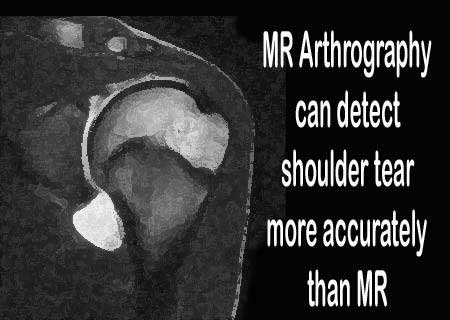A latest study says that MR Arthrography of the shoulder may aid physicians to detect tears and thus determine if surgery is needed or not. This study was conducted at the Neuroskeletal Imaging in Merritt Island, Florida.
A study was conducted on around 150 patients, who had undergone both 3T MRI and MR arthrography of the shoulder. Apparently, 3T MRI is a non-invasive procedure, while MR arthrography is an invasive procedure.
Lead author, Thomas Magee, MD, says that, this study was supposedly conducted in order to evaluate if 3T MRI does as well as MR arthrography. He further says that since MR arthrography is an invasive procedure, where contrast has to be injected in the shoulder, which is why some patient’s may fear this procedure.
The study results revealed that MR arthrography produced a more precise diagnosis as compared to 3T MRI. It’s stated that the sensitivity of 3T MRI for anterior labral tears was 83 percent, 84 percent for posterior labral tears, 83 percent for SLAP tears, 92 percent for supraspinatus tendon tears, and finally 68 percent for partial-thickness articular surface tears. Evidently there was a significant increase of sensitivity in MR arthrography. Sensitivity for anterior labral tears was 98 percent, 95 percent for posterior labral tears, 98 percent for SLAP tears, 100 percent for supraspinatus tendon tears, and finally 97 percent for partial-thickness articular surface tears.
Dr. Magee thus says that through MR arthrography, things are more precisely visible in the shoulder. On the other hand, it is also pointed out that 3T MRI’s resolution and picture quality is higher than MR arthrography, with an exception of hidden lesions without joint swelling. It’s stated that through MR arthrography, the swelling of the joint permitted the unveiling of lesions that may not have been detected by the traditional MRI’s.
The MR arthrography permits physicians to view additional, pertinent surgical lesions and thus be a better guide to the surgeon.
It’s recommended that patient’s should consider getting MR arthrography done before the commencement of their surgery, in order to verify their diagnosis and determine if surgery is necessary or not.
Their study findings are published in the American Journal of Roentgenology issue.

